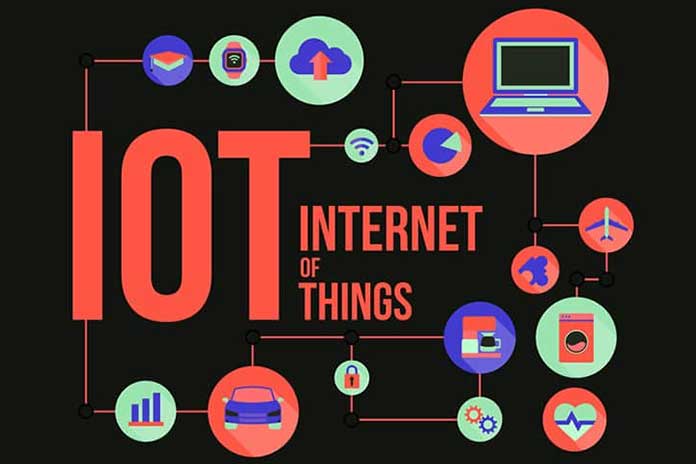Implementing IoT Projects Quickly And Successfully: This Is How It Works!

The decisive factor for the success of an IoT project is not the technical implementation but the proper context of the product. Medium-sized companies can bring their projects to market faster and more successfully with a holistic development approach. And save time as well as capital and development resources.
The Internet of Things (IoT) is not new. It was included in Gartner’s Hype Cycle for Emerging Technologies report in 2011. Since then, IoT technologies and cloud and connectivity solutions have continuously evolved: they have become cheaper and adapted to market needs. It’s no secret that there is a lot of money to be made in this market – company owners and board members are feeling increasing pressure to finally start their own IoT projects. In principle, German medium-sized companies fulfil all the necessary conditions: quality, reputation, and ideas. For many companies, preparing for series production is essential as quickly as possible.
IoT Projects: How To Get Going
Because – so the reasoning goes – only those who are quick on the market can gain a competitive advantage. In addition, developing and constructing a prototype is now easier than ever. IoT service providers lure people with advertising promises that they will be ready for the market quickly.
This is where the problem begins. Far too often, companies develop beyond what is needed. The result: the costs exceed the added value. Integrating the existing business model proves to be more complex than assumed. In the worst case, IoT development starts over time once the prototype is completed. The companies lack the focus on strategy, vision, and know-how. This is what happened to a manufacturer of garden technology. The need for intelligent irrigation solutions was and is there. The manufacturer solved the problem of the lack of knowledge by investing in a start-up, which later turned out to be a strategic mistake. The product and app were developed quickly – but the start-up announced that it would cease business shortly after the launch. Setting up a separate department would have made more sense. The example shows that strategies are necessary because IoT is not an end.
The Business Case Comes Before The Technology
Medium-sized companies have to take a holistic approach to make their IoT projects a success. In this way, they save money, development resources, and time – and time can be the decisive competitive advantage to secure essential market shares and satisfied customers. At the beginning of every IoT project, the application must have a concrete idea, including the added value to be achieved – i.e., the actual customer benefit.
Those responsible should ask themselves the following questions: What information can be used to generate added value? Is there a need on the market, or will this arise in the future? Which valuable additions to the core business can be realised through IoT? Before any consideration regarding the technical implementation, there is the development of a business case that enables a targeted approach. This way, all elements, from the sensor to the user, can – and must – be coordinated and fit the application. It makes sense to bring all perspectives (including that of the customer) and disciplines together.
The prototype will be built later. A good example is the approach of an energy company. They focused on solving a single problem: avoiding maintenance costs using the proper hardware. As knowledge about the environmental impact of different hardware was limited, an IoT solution was used to collect the relevant data and make better purchasing decisions. In this case, the IoT solution was built around the problem and not networked “at random.”
The Right Data Strategy
But how can assumptions and goals regarding the use case be formulated without prior access to data and information? Businesses face a classic chicken-and-egg problem. One solution is to bring as many departments as possible around the table. If the internal knowledge of the hardware and software teams – if they exist at all – is not sufficient, external experts can support the pre-selection of assumptions. The necessary transmission of product data in a structured form is also related to this: companies have to position themselves broadly to reach their customers via the numerous front ends and different gatekeepers such as apps and platforms. And partners and their software systems must also be able to connect to data and processes.
The following questions can be helpful: How will the interface advance the connected product? Which users and target groups should the product appeal to? What will the supply of data and services be like in the long run? Companies must use this to create added value if the IoT projects ultimately generate accurate data. The magic word is data science. Only those who can read the treasure trove of data correctly will find out how to operate more efficiently, cost-efficiently, and sustainably. Proper data utilisation creates a personalised user experience for customers, enables intelligent services or new products, and thus generates recurring revenue and secures market shares.
IoT Projects: Conclusion
The technical challenges associated with an IoT project have largely been solved. A prototype can be built within a short time. That doesn’t mean that the technological context isn’t relevant: the decisions for the proper connectivity solution or the correct power supply are essential but primarily result from the respective application area. Developing a resilient business case with a use case that guides thought and action is decisive for true success. This also includes a suitable data strategy, including reasonable assumptions about the project, data science, and interface management. Developing an IoT strategy is challenging, especially for companies embarking on the process for the first time.
